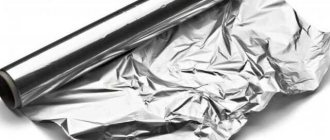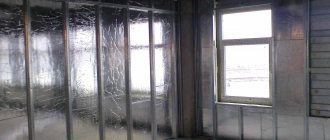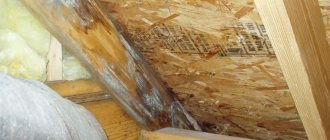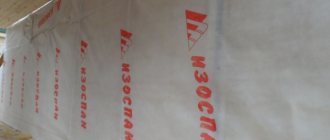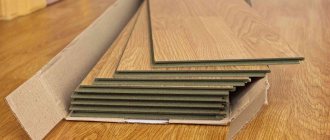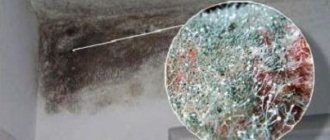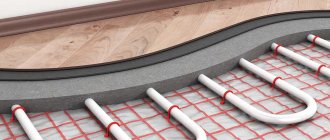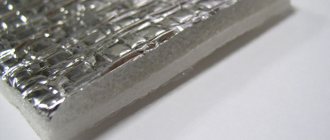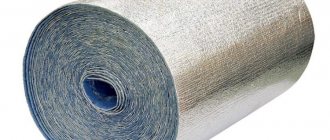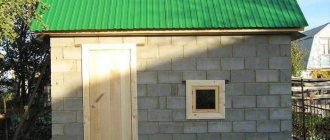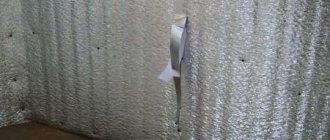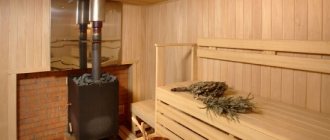Aluminum foil for bath insulation
Thermal insulating material for a bath should be highly resistant to high temperature and humidity. Aluminum foil has these properties, and therefore is one of the most popular insulation materials in baths. It is used both in combination with other materials and without them, depending on the thickness of the walls and operating conditions.
Aluminum foil for bath insulation
Characteristics and properties of foil
One of the most important characteristics of aluminum foil is its reflective ability - up to 97% of infrared rays. Continuous covering of the steam room with this material contributes to maximum heat retention, because IR rays are not absorbed by the walls, but are reflected back into the room. And even if the surface of the foil fades over time, this will have virtually no effect on the reflective properties.
Foil on the bathhouse ceiling - photo
In addition, it can withstand temperatures up to 300 °C and higher, depending on the brand, has a low specific gravity and does not emit compounds harmful to the body.
Bath foil
This material also has other important properties:
Almost all the heat remains in the steam room, and the walls and the insulating layer under the foil are reliably protected from condensation. For greater efficiency, not only the walls, but also the ceiling are sheathed with foil, because steam and hot air first rise upward. Attaching it is not difficult, the main thing is to avoid its deformation during operation and not leave gaps between the panels.
Foil is produced in rolls and sheets, the thickness is from 0.007 to 0.2 mm, the width of the tape is from 1 to 150 cm. Depending on the manufacturing method, it can be annealed (soft) and unannealed (hard), and this is indicated by the marking - the letters "M" and "T" respectively. Both types are suitable for thermal insulation of rooms. It is recommended to sheathe the steam room with foil from 30 to 300 microns thick.
Photos of the appearance of rolls of reflective insulation Megaspan FB for baths and saunas
Prices for aluminum foil for baths
Types of foil for baths
Thin soft foil easily crumples and tears during operation, so more convenient and durable varieties have appeared - foil paper, fabric and insulation.
Foil paper (laminated foil)
Foil fabric (foil fabric)
| Type of material | Main characteristics | Approximate cost RUR/m2 |
| Dense, elastic material with high vapor barrier properties. There are two types: foil + kraft paper and foil + paper + polyethylene. The standard width of the tape is 1.2 m. It can withstand temperatures up to 130°C, is easy to cut and holds its shape. Attach to self-tapping screws, nails, construction staples. Not recommended for cladding walls adjacent to the stove. | from 40 two-layer, from 60 three-layer | |
| Soft, two-layer material made of fiberglass and foil. Withstands temperatures up to +500 °C, high moisture resistance, resistance to mold and other microorganisms. The thickness of the foil fabric is from 0.12 to 3 mm, the sheets are attached end-to-end. It is used to insulate saunas and baths; you can sheathe walls adjacent to the stove. | from 50 | |
| Insulation based on polystyrene foam, covered with a thin layer of aluminum foil. It is produced in sheets 1.2 x 0.6 m, with a thickness from 2 to 10 cm. It is used for insulating the interior of saunas and baths. | from 250 | |
| Roll insulation with one-sided or two-sided foil coating. The thickness of the material is 2-10 cm. It is used for thermal insulation of the interior of baths and saunas, and can withstand temperatures up to +100 °C. Not suitable for covering surfaces adjacent to the stove. | from 35 | |
| Foiled mineral wool | Available in rolls and in the form of mats of various thicknesses. It has very high thermal insulation properties, therefore it is optimally suited for insulating frame baths and saunas. | from 200 |
Insulation of a bathhouse from the inside - diagram
Internal insulation of a bathhouse is one of the most important stages in the arrangement of this building.
Without high-quality thermal insulation, the owner will have to spend much more resources on heating the steam room, and the atmosphere in the bathhouse itself without properly installed protection will leave much to be desired. Since ancient times in Rus', moss, felt and even flax have been used to insulate baths, mainly due to the lack of other insulation materials - plant fiber either rots or dries, so today it is not used for basic thermal insulation.
The main difference between insulating a bathhouse and a similar event in an ordinary home is simple: in the steam room you need to maintain the heat for as long as possible, i.e. the high temperature should remain indoors for as long as possible.
Thermal insulation work in a bathhouse can be carried out using a wide variety of materials. For example, the ideal solution is modern insulation based on stone wool with a foil coating applied - it does not burn, can withstand temperatures up to 750 degrees, effectively retains heat, does not rot, and is not of interest to rodents.
After reading the information below, you will receive a complete theoretical understanding of the process of performing internal insulation of a steam room, and also study step-by-step instructions for self-installation of thermal insulation materials.
Any construction, repair and finishing activities begin with the preparation of materials, without which the implementation of the planned work will simply be impossible. Pay due attention to studying the list below: it is better to spend a little time reading and immediately buy everything you need, than to later return to the store and buy more of what you forgot.
Thermal insulating material for a bath should be highly resistant to high temperature and humidity. Aluminum foil has these properties, and therefore is one of the most popular insulation materials in baths. It is used both in combination with other materials and without them, depending on the thickness of the walls and operating conditions.
One of the most important characteristics of aluminum foil is its reflective ability - up to 97% of infrared rays. Continuous covering of the steam room with this material contributes to maximum heat retention, because IR rays are not absorbed by the walls, but are reflected back into the room. And even if the surface of the foil fades over time, this will have virtually no effect on the reflective properties.
Foil on the bathhouse ceiling - photo
In addition, it can withstand temperatures up to 300 °C and higher, depending on the brand, has a low specific gravity and does not emit compounds harmful to the body.
Bath foil
This material also has other important properties:
- resistance to ultraviolet radiation and corrosion;
- vapor tightness;
- plasticity;
- durability;
- moisture resistance.
Almost all the heat remains in the steam room, and the walls and the insulating layer under the foil are reliably protected from condensation. For greater efficiency, not only the walls, but also the ceiling are sheathed with foil, because steam and hot air first rise upward. Attaching it is not difficult, the main thing is to avoid its deformation during operation and not leave gaps between the panels.
Foil fastening
Foil is produced in rolls and sheets, the thickness is from 0.007 to 0.2 mm, the width of the tape is from 1 to 150 cm. Depending on the manufacturing method, it can be annealed (soft) and unannealed (hard), and this is indicated by the marking - the letters "M" and "T" respectively. Both types are suitable for thermal insulation of rooms. It is recommended to sheathe the steam room with foil from 30 to 300 microns thick.
Photos of the appearance of rolls of reflective insulation Megaspan FB for baths and saunas
Thin soft foil easily crumples and tears during operation, so more convenient and durable varieties have appeared - foil paper, fabric and insulation.
Type of materialMain characteristicsApproximate cost rub./m2
| Foil paper (laminated foil) | Dense, elastic material with high vapor barrier properties. There are two types: kraft paper foil and polyethylene paper foil. The standard width of the tape is 1.2 m. It can withstand temperatures up to 130°C, is easy to cut and holds its shape. Attach to self-tapping screws, nails, construction staples. Not recommended for cladding walls adjacent to the stove. | from 40 two-layer, from 60 three-layer |
| Foil fabric (foil fabric) | Soft, two-layer material made of fiberglass and foil. Withstands temperatures up to 500 °C, high moisture resistance, resistance to mold and other microorganisms. The thickness of the foil fabric is from 0.12 to 3 mm, the sheets are attached end-to-end. It is used to insulate saunas and baths; you can sheathe walls adjacent to the stove. | from 50 |
| Foiled polystyrene foam | Insulation based on polystyrene foam, covered with a thin layer of aluminum foil. It is produced in sheets 1.2 x 0.6 m, with a thickness from 2 to 10 cm. It is used for insulating the interior of saunas and baths. | from 250 |
| Foil polyethylene foam | Roll insulation with one-sided or two-sided foil coating. The thickness of the material is 2-10 cm. It is used for thermal insulation of the interior of baths and saunas, and can withstand temperatures up to 100 °C. Not suitable for covering surfaces adjacent to the stove. | from 35 |
| Foiled mineral wool | Available in rolls and in the form of mats of various thicknesses. It has very high thermal insulation properties, therefore it is optimally suited for insulating frame baths and saunas. | from 200 |
We suggest you familiarize yourself with Insulation for a bathhouse with foil: installation features
To choose the optimal method of thermal insulation, you need to take into account several factors, the main ones being the operating conditions of the bathhouse and the material from which it is built. For warm log buildings with high-quality caulked walls, foil insulation is not needed, it will only be a waste of money.
Do not use foil in a bathhouse made of timber or logs
If the bathhouse is wooden, but large enough and does not warm up well, it is enough to sheathe the walls and ceiling with ordinary thin foil, and then cover it with clapboard. You can cover only the surface behind the stove with foil, this will speed up the heating of the steam room and save some fuel.
The walls behind the stove are covered with foil
A bathhouse made of aerated concrete is also considered quite warm, but such material requires high-quality vapor barrier. The choice of foil in this case is completely justified, and for convenience you can use laminated rather than ordinary foil.
Fastening laminated foil
Brick and frame baths must be insulated. Here, foil insulation based on cotton wool or expanded polystyrene is optimal. For the ceiling, the type of foil is also selected taking into account the thickness of the ceilings and the presence (absence) of thermal insulation in the attic.
Foil on the ceiling in the bathhouse
Operating conditions also have a certain meaning. If the sauna is used periodically and people steam in it for a short time, there is no great need for thermal insulation with foil. It’s a completely different matter if the steam room is heated very often or the bath procedures drag on for several hours: thermal insulation of the room will save a lot of firewood, the bath will warm up faster and take longer to cool down.
How to attach foil
High-quality thermal insulation is the key to maximum comfort in using a bathhouse and a guarantee of no extra heating costs. Insulation is carried out on 4 main surfaces: roof, walls, floor and ceiling.
It is with the nuances of arranging the thermal insulation of the last mentioned structure that you are invited to familiarize yourself further. While studying the information below, you will consider important information about insulation in general, the properties of existing thermal insulation materials, and also receive instructions for independently carrying out the relevant technological stages of work.
Heat leakage from a room can occur in three main ways:
- through cracks in the ceiling structure;
- when heat transfers to cold objects in the environment;
- when heated air masses pass through various types of monolithic/homogeneous barriers.
To eliminate all of these problems, a multi-layer ceiling structure is installed, which includes, among other things, a layer of heat-insulating material. If insulation is performed incorrectly or is completely absent, condensation will begin to form on the floors, warming up the room will require much more time and, therefore, more significant expenditure of energy resources.
A standard insulation scheme for a ceiling structure is shown in the following image.
Standard scheme for insulating a ceiling structure
Helpful advice! Try to lay each subsequent insulating layer perpendicular to the previous one. This will allow you to obtain the most reliable design with minimal deformation indicators.
Bathroom ceiling insulation scheme
In accordance with the design features of the structure, baths can be divided into 2 large groups: those with an attic/attic floor and those without one. The standard scheme for insulating the ceiling in a bathhouse without an upper tier was presented above. The procedure for thermal insulation of the ceiling in a bathhouse with more than 1 floor deserves separate consideration.
The technology for constructing a bathhouse with an attic floor involves installing a ceiling structure that is much more powerful in its performance. An additional obstacle to the flowing warm air masses will be the space under the roof itself, as well as, to some extent, the roof structure itself.
Bathhouse with attic
Attic in the bathhouse
In bathhouses that do not have an attic/attic tier, warm air masses encounter much fewer obstacles, and their strength is also noticeably lower. Despite this, ceiling structures both in bathhouses with an upper tier and in buildings without one need high-quality and competent insulation.
Examples of proper ceiling insulation in a bathhouse with an attic/attic are shown in the following image.
Examples of proper ceiling insulation in a bathhouse with an attic/attic
Important note! If the ceiling is made of logs, a sheathing is installed on the side of the bathhouse, the logs are covered with a vapor barrier, a 20-centimeter layer of sand is poured on top and then insulation is carried out according to the standard scheme. Skull boards can be mounted on top of logs.
We suggest you familiarize yourself with How to cover the lining inside a bathhouse
Using foil in a bath
Using foil in a bath
To choose the optimal method of thermal insulation, it is necessary to take into account several factors, the main of which are the operating conditions of the bathhouse and the material from which it is built. For warm log buildings with high-quality caulked walls, foil insulation is not needed, it will only be a waste of money.
Do not use foil in a bathhouse made of timber or logs
If the bathhouse is wooden, but large enough and does not warm up well, it is enough to sheathe the walls and ceiling with ordinary thin foil, and then cover it with clapboard. You can cover only the surface behind the stove with foil, this will speed up the heating of the steam room and save some fuel.
The walls behind the stove are covered with foil
A bathhouse made of aerated concrete is also considered quite warm, but such material requires high-quality vapor barrier. The choice of foil in this case is completely justified, and for convenience you can use laminated rather than ordinary foil.
Fastening laminated foil
Brick and frame baths must be insulated. Here, foil insulation based on cotton wool or expanded polystyrene is optimal. For the ceiling, the type of foil is also selected taking into account the thickness of the ceilings and the presence (absence) of thermal insulation in the attic.
Foil on the ceiling in the bathhouse
Operating conditions also have a certain meaning. If the sauna is used periodically and people steam in it for a short time, there is no great need for thermal insulation with foil. It’s a completely different matter if the steam room is heated very often or the bath procedures drag on for several hours: thermal insulation of the room will save a lot of firewood, the bath will warm up faster and take longer to cool down.
How to choose the best insulation for different applications
The choice of insulation with foil for a bath depends on the material from which the building is constructed and the frequency of its use. In some cases, you can get by with simple aluminum foil, while in others you need cladding using a heat-insulating layer.
General recommendations for selection
Regardless of what type of bath foil you choose, you must proceed from the following considerations:
1. When buying cheap products of unknown origin, there is a risk of purchasing material made from poor quality raw materials. Its performance properties will be at the lowest level.
2. The insulation must be covered with real aluminum foil. Some manufacturers practice spraying, but there is very little benefit from it.
3.The fire threshold is of great importance. Foil in the bath is exposed to high temperatures, so fire safety is the main selection criterion.
4. It is important to choose the right thickness of insulation with foil on the walls for the bathhouse; the effectiveness of the work you do will depend on this.
What foil insulation is needed for a wooden bath
A log bathhouse with well-caulked walls does not require any additional insulation. Wood does not conduct heat well, so it is well retained inside.
In a small building, only the ceiling is sheathed with foil or kraft foil. If the bathhouse is spacious and you need to update the interior, then you can line its walls and ceiling with plain foil, and then line it with wooden clapboard.
In order to protect the wood from fire, they use wall cladding behind the stove. This measure further increases the temperature in the steam room, as heat is reflected from the foil.
When choosing regular foil for a bath, do not ignore such a parameter as the thickness of the aluminum layer. It ranges from 0.007 to 0.2 mm, and the vapor permeability of the material is directly proportional to this value.
Wall coverings made of other materials
Buildings made from aerated concrete blocks are considered very warm, but a vapor barrier is required here. You can use regular foil for such a bath, but it is better if it is glued to waterproof craft paper. Such insulation will become a reliable barrier to the occurrence of dampness, will retain heat inside, and steam will not harm your health.
Baths with frame and brick walls are subject to mandatory insulation for the reason that they do not retain temperature well. Here you need foil insulation, the basis of which is mineral wool or expanded polystyrene. You can also make a “thermos” from a quencher and aluminum foil.
How to attach foil
Simple cladding
Another advantage of aluminum foil is that it is convenient to attach it at any time, on any surface. This does not require major repairs; the work will take very little time and effort.
Simple sheathing of walls and ceilings with foil
To protect wooden walls, you first need to make sure that the surface is smooth enough and there are no sharp protrusions that will tear the foil. If such defects are found, they should be cleaned with sandpaper. Then everything is simple: take a roll of foil, unwind a strip along the height of the wall, cut it off, and fix it in the upper part with a stapler. Straighten the canvas downwards, fix it again so that it does not move, then attach the next strip with an overlap of 5-7 cm over the first. The joints must be secured with aluminum tape. The usual one cannot be used for these purposes.
The foil strips can also be positioned horizontally, if it is more convenient for you to mount it that way. The main thing is that there are no gaps left anywhere. Around window and door openings, the foil is also attached close to the ends and secured with a stapler around the perimeter.
An example of fixing foil around a window opening
Example of fixing foil around a doorway
Foil around the window
If the entire steam room is being sheathed, first the foil is fixed to the ceiling, leaving overhangs at the edges 10 cm wide. When sheathing the walls, the material will be overlapped so that there is not the slightest gap between the ceiling and the walls.
Finally, wooden slats are stuffed over the vapor barrier, onto which the lining is attached. The thickness of the slats should not be less than 20 mm. The presence of an air gap between the foil and the finishing is a prerequisite for effective thermal insulation.
Fastening the lining - photo
Aluminum adhesive tape prices
Foil for finishing the steam room
Question:
Dear Semenych! Fastening foil in the steam room. Directly on the timber in the steam room or do you need a gap between the wall and the foil?
Alexander Alexandrovich Klimov, Red Field.
Answer:
Hello, Alexander from Krasnoye Polye!
There is no consensus on whether to leave a gap between the walls and the foil in steam rooms of baths.
Some believe that there should be a gap between the main (outer) walls of the steam room and the foil. Others argue that such a gap should be between the foil and the internal walls made of aspen or linden lining.
Still others believe that no gap should be made at all, it will do.
I have not come across any fundamental works on this subject.
The physical meaning of installing foil is clear - it serves as a reflector of the heat generated by the sauna stove. As a result, the steam room warms up faster and the heat is retained longer.
During my practice, building baths had to be done in different ways. For example, in my bathhouse in the garden, aluminum foil was attached without gaps both between the outer walls made of timber and between the inner walls made of clapboard. No troubles have been noticed in more than a dozen years of the bathhouse’s existence. The only thing is that due to high temperatures in two places, the aspen lining has dried out somewhat and small gaps have appeared through which the foil is visible. This is quite possible to survive.
In cases of using external walls made of logs, in order to attach foil or foil insulation to them, it was necessary to first install a lathing frame to level the walls, on which the screen was attached. In this case, a gap appeared between it and the outer walls. Over several years of regular use of the steam room, there were no comments from the client.
Another example is external walls made of edged boards (with siding on the outside). The boards are stuffed onto a frame made of timber, between which there is mineral insulation, and foil is attached to the timber. Then the counter-lattice on the timber, and then the lining of the internal walls. For ten years, no comments from the owner.
All this most likely suggests that there is no particular difference from the presence or absence of gaps. Do what's easiest. And there - as you know.
Good luck!
Quartz Vinyl Flooring Sale!
Discounts! Free shipping! Installation! Wide choose.
Eco-friendly materials. Comfortable showroom. Storage. Laying. Guarantee. Stock. LVT, SPC… +7 (495) 925-06-19
vinyl.inavek.ru
Other questions on the topic of arranging a Russian bath:
- How to build a sauna with your own hands
- Cost of replacing bath floors
- Is foil required in a steam room?
- Fire protection for baths
- Heat exchanger in the bath
- Protection of the sauna frame
- How to fill floors in a steam room and sauna sink
- Budget roof for a bathhouse 4 by 4 meters
- Where to start finishing a bathhouse made of corrugated timber
- Reconstruction of an old timber bathhouse
- Mounting a water tank on a wooden wall
- Insulation of the stone base of a log bathhouse
- Coating a concrete floor in a bathhouse with bitumen mastic
- Insulation of a transportable bathhouse from a sea container
- A team for the construction of a log bathhouse
- Insulation of a steam bath
- Overlap between the steam room and the residential floor
- Is there any harm from galvanized sheets in a steam room?
- How to insulate floors in a bathhouse
- Sauna in a timber house
- How to wash lining in a steam room
- Floor and drains in a bathhouse on a slab foundation
- How to cut in the fifth wall in a log bathhouse
- Waterproofing bath walls with bricks
- Metal bath frame
- Eco-friendly insulation of bath floors
- How to make a sauna in the utility room at home
- What to build a bathhouse on loam from
- Shrinking the bath and removing the adjusting jacks
- Bathhouse in a garden house
- Repair of low-quality log bathhouse
- Plywood steam room frame
- Waterproofing a washroom in a wooden bathhouse
- Turnkey sauna in 3 weeks
- Should I insulate the roof of a frame bath?
- Bathhouse – Filled floors on the ground
- Protection of the lower logs of the bath house
- Protection of timber bath walls
- How to clean painted wood in a sauna steam room
- Bathhouse designed by Semenych
- Insulation of a bathhouse made of an iron frame
- How to increase the height of a log bathhouse
- Evaporation from bitumen mastic
- Sauna ceiling in a timber house
- Advantages and disadvantages of sauna stoves
- How to cover a steam room with clapboard
- Foil for finishing the steam room
- Interfloor insulation of a two-story bathhouse
- Equipment for draining water in a bathhouse
- Should a steam room in a log house be lined with clapboard?
- Convert part of an old house into a bathhouse
- Partitions in a log bathhouse - log or frame
- Insulation of the floor and ceiling in the bathhouse
- How to make a bathhouse from an old log barn 10 by 10
- How to distinguish aspen lining from pine and spruce
- Sealing cracks in a bathhouse
- Floors and drainage in the bathhouse
- Arrangement of hot water in the bath
- Waterproofing wooden floors and walls in a bathhouse
- Bathroom floor tiles
- Ventilation in a two-story bathhouse
- Bathroom in a wooden house
- Covering log walls in the bathhouse's washing compartment
- Construction of a bathhouse on a site with a slope
- Drain in a transport bath
- Repair of bath floors
- How to clean a linden bathhouse from darkening
- Questions about cutting a bathhouse after installation
- Ventilation in the steam room of the bath
- Bathhouse embedded in the slope of a ravine
- Bathroom floor installation
- The lining in the bathhouse has turned black - how to clean it?
- Bathhouse from an old panel house
- Do-it-yourself septic tank for a bathhouse
- What time of year is it better to cut a log house for a bathhouse?
- How to attach a timber bathhouse to a brick house
- Is it necessary to raise the low bath?
- Bathhouse - wood or concrete?
- Plywood in the steam room of the bath
- Which foundation for a 4 by 6 m bathhouse to choose
- Floor in bathhouse sink
- Construction of a bathhouse from an old country house
- Sauna frame - pine or aspen?
- Where to start after installing a log bathhouse
- What is the best way to cover the walls of the steam room?
- Columnar foundation for a log bathhouse
- Bathroom sink floors
- Bath stove pipe
- Assembling a timber bathhouse in the rain
- The fungus ate 4 logs in the bathhouse
- Foundation for a bathhouse on a peat bog
- The strip foundation under the bathhouse sank
- Bathhouse - cabinet for stove
- Pile-screw foundation for a bathhouse
- Construction of an inexpensive bathhouse
- Floor in a finished (transportable) bathhouse
- How to make and insulate bath walls
- Replacement of the lower crowns of the bath
- Finish the steam room with slate
- The water in the bathhouse is boiling
- Roof for a bathhouse in oriental style
- Steam room finishing
- Why does a boiler fire in a stove bath?
- Drainage system in the bathhouse
- How to clean the ceiling in a bathhouse
- Bathhouse with dimensions 17 x 6 m
- Questions about building a bathhouse
- Insulation of the ceiling of a two-story bathhouse
- How to inexpensively insulate the ceiling in a bathhouse?
- The ceiling in the bathhouse turns black, what should I do?
- Bathhouse from a GAZ-66 booth
- Is it possible to build a bathhouse in one season?
- Floating foundation for a bathhouse
- Why do the ceilings in the bathhouse turn black?
- Boiler and foundation for the stove in the bathhouse
- How to insulate the ceiling in a bathhouse?
- How to make a pond for a bathhouse in the country?
- Do-it-yourself stove for a small bath
Russian bath
All questions to Semenych about construction
Semenych (author of materials)
Our site is regularly updated with interesting and unique materials and articles on the topics of lumber, building materials and works, the author's opinion and knowledge of a real coven with more than 15 years of experience are provided. There is a section - funny stories of shabashniks. If you would like to receive information about this, subscribe to our website's newsletter. We guarantee that your address will not be shared with third parties.
Apartment renovation in Moscow and Moscow region
We work with a guarantee! Wide range of repair work.
Professional craftsmen. +7 (905) 797-20-34
luxurycomfort.ru
| Country house | Bath |
| For the dacha | Tool |
| Materials | Tales |
| Foundation | Log houses |
| Roofs | Insulation |
| Walls | Siding |
| Floors | Cellars |
| Attics | Doors windows |
| Stairs | Extensions |
| Wells | Toilets |
| Balconies | Loggias |
| Condensate | Flooding |
| Fences | Kennels |
| Sidewalk | Birdhouse |
| Adobe | Carts |
| Garages | Barn |
| Greenhouses | Bath |
| Swing | Brazier |
| Shower |
| Horizontal bar |
